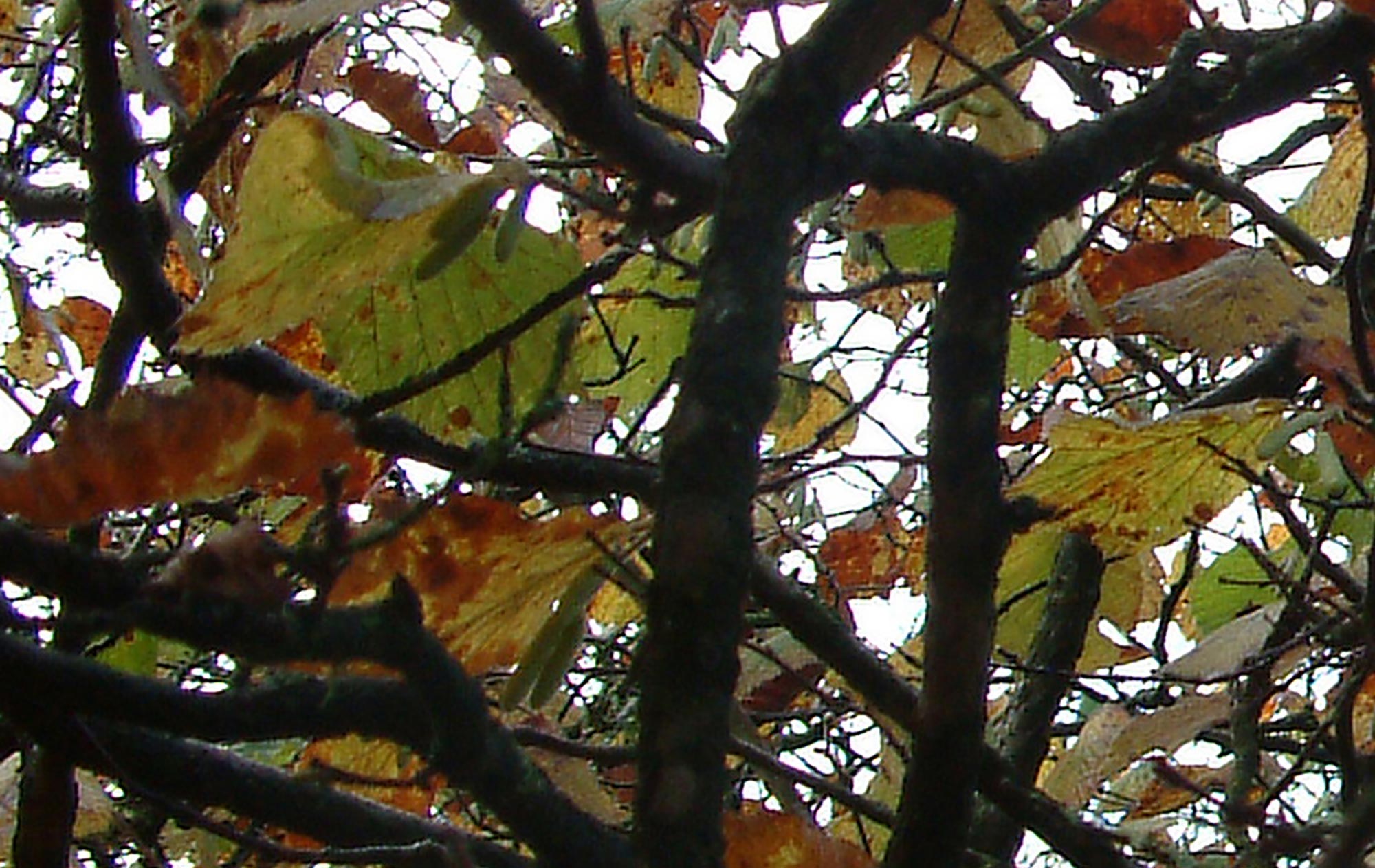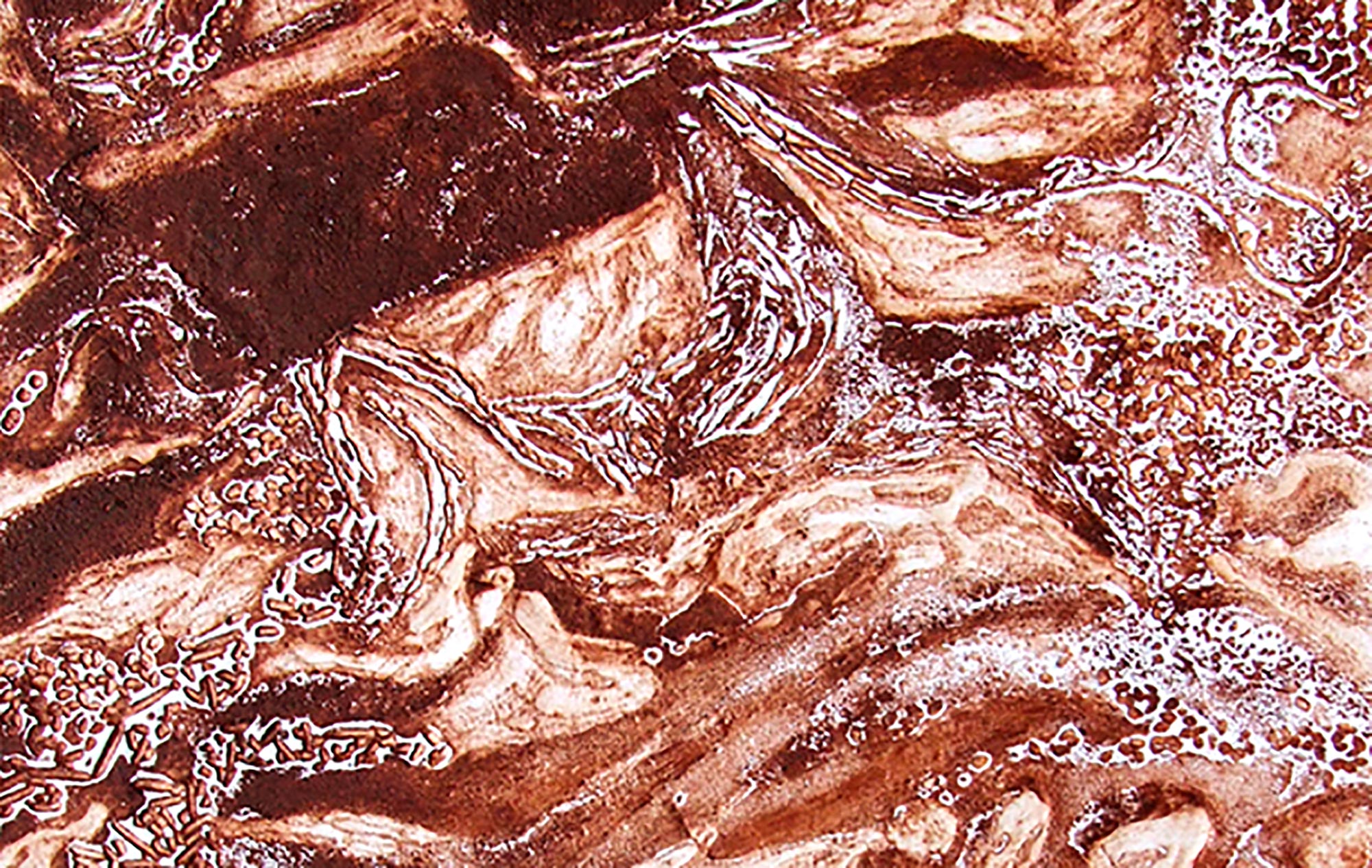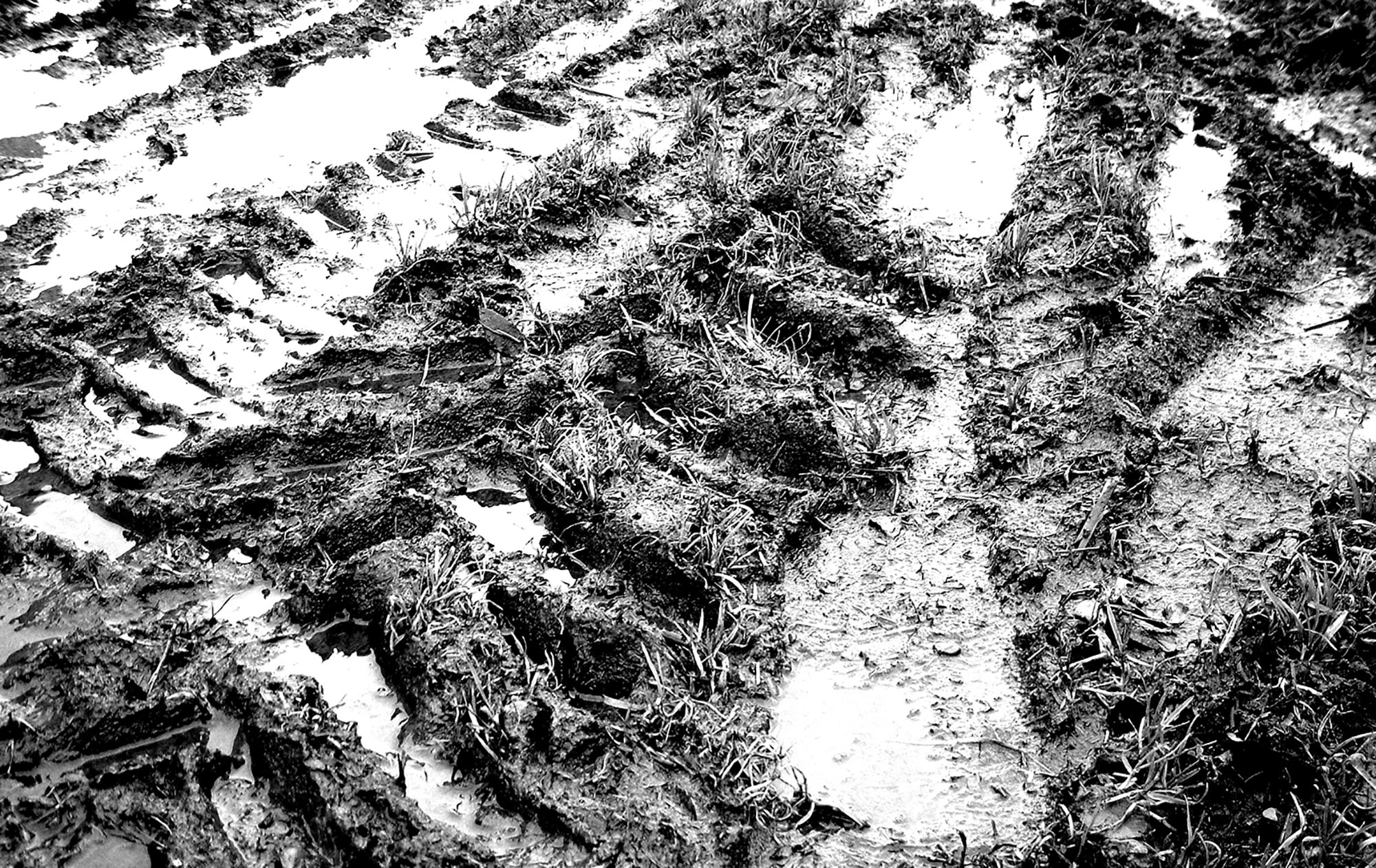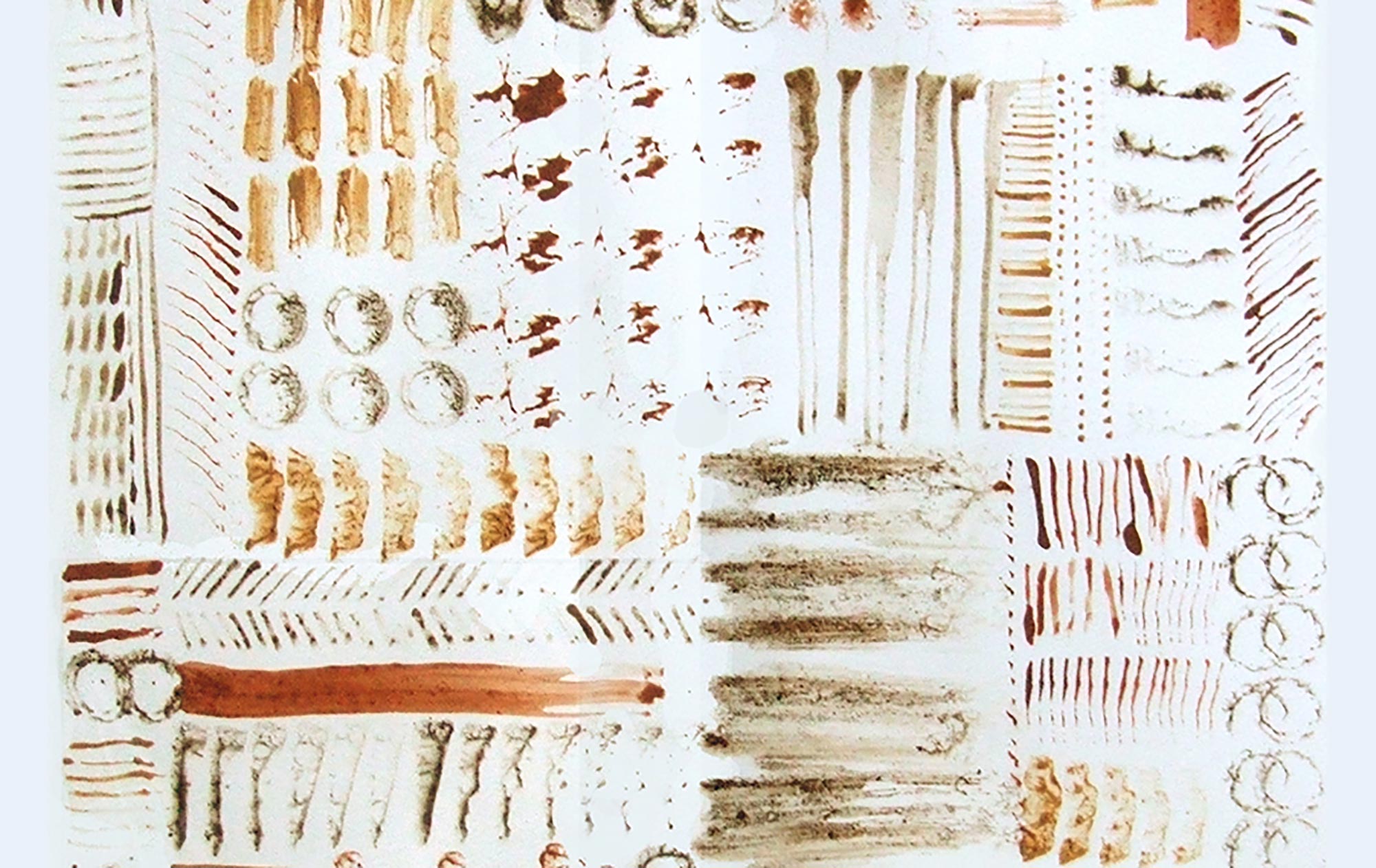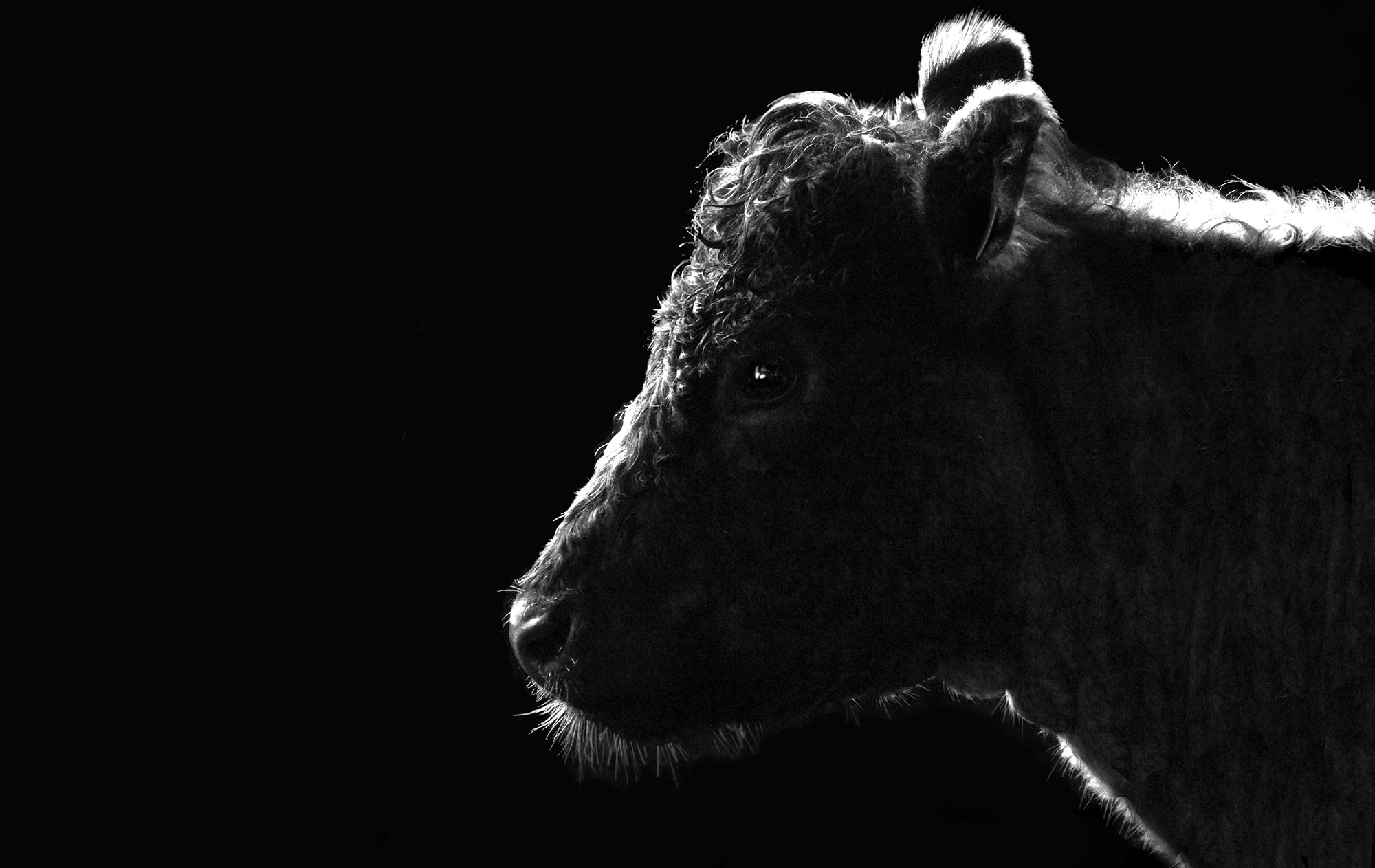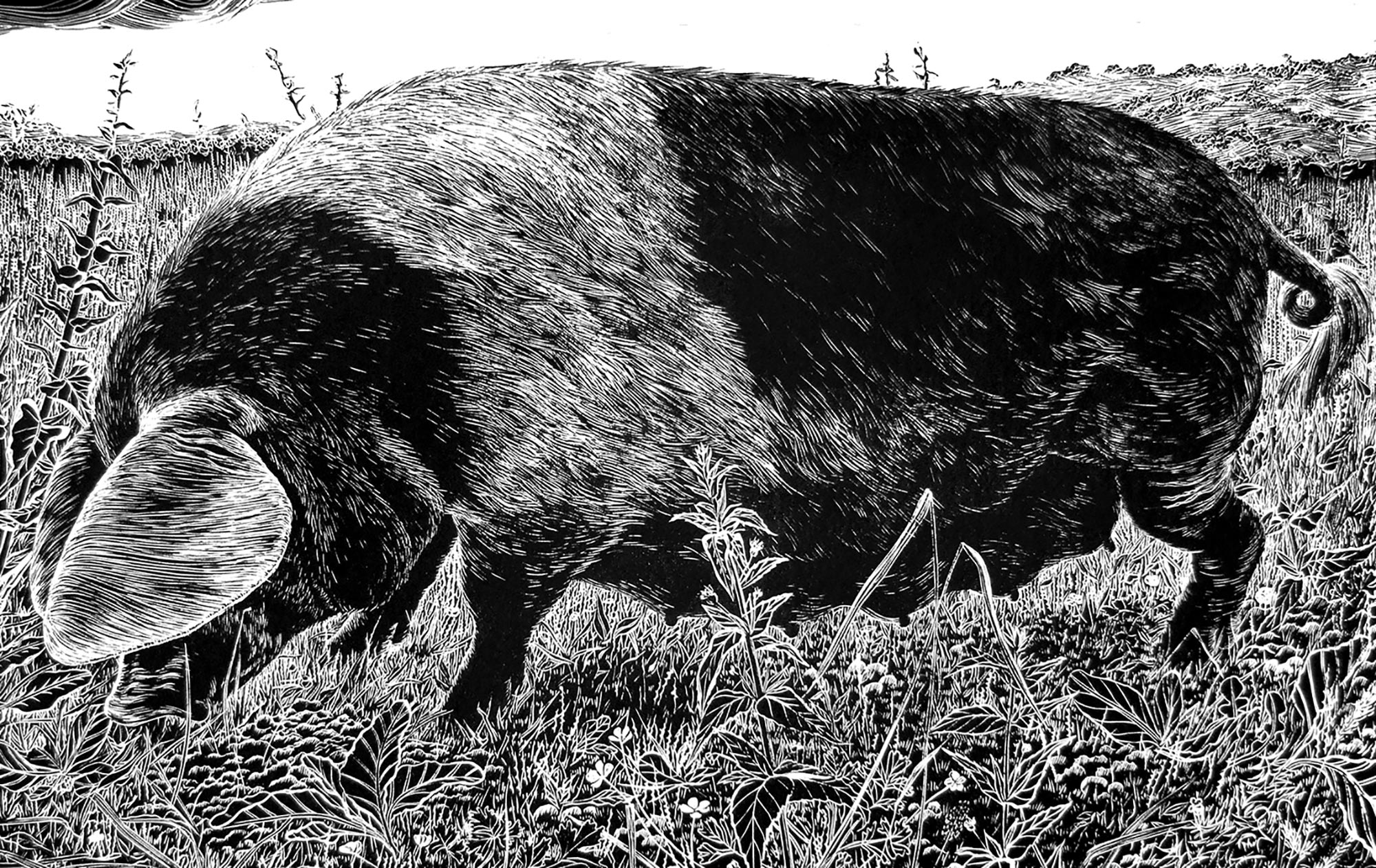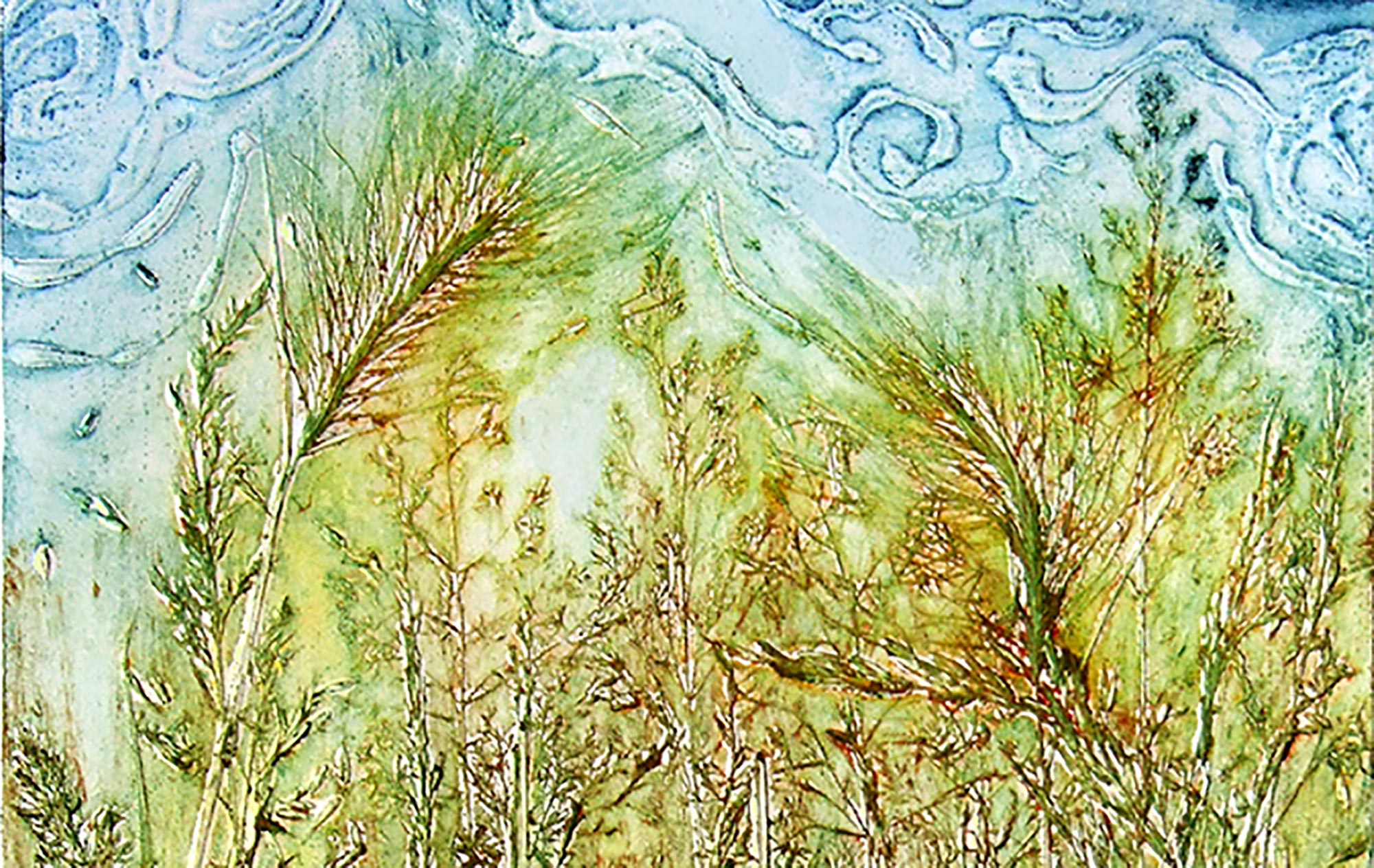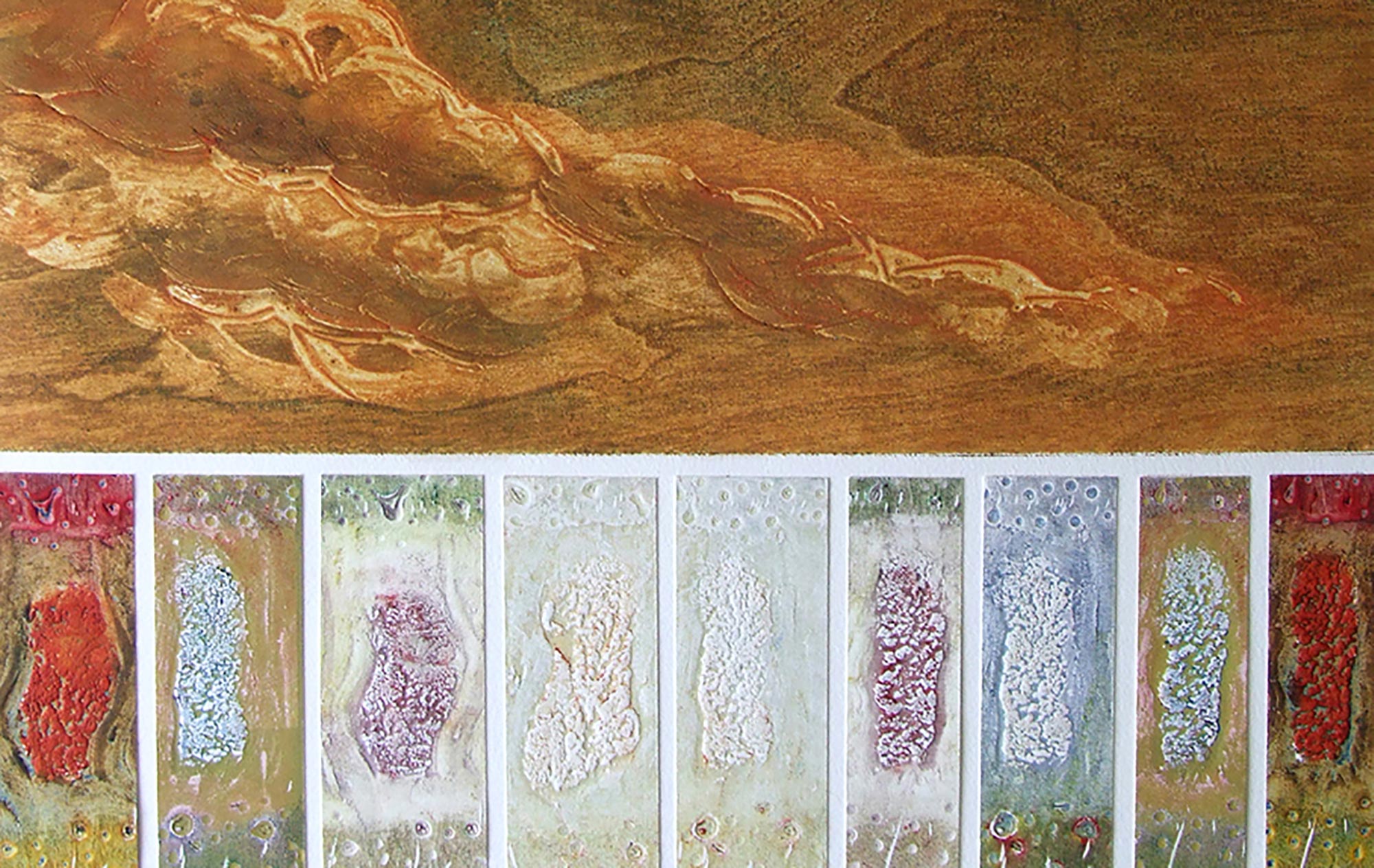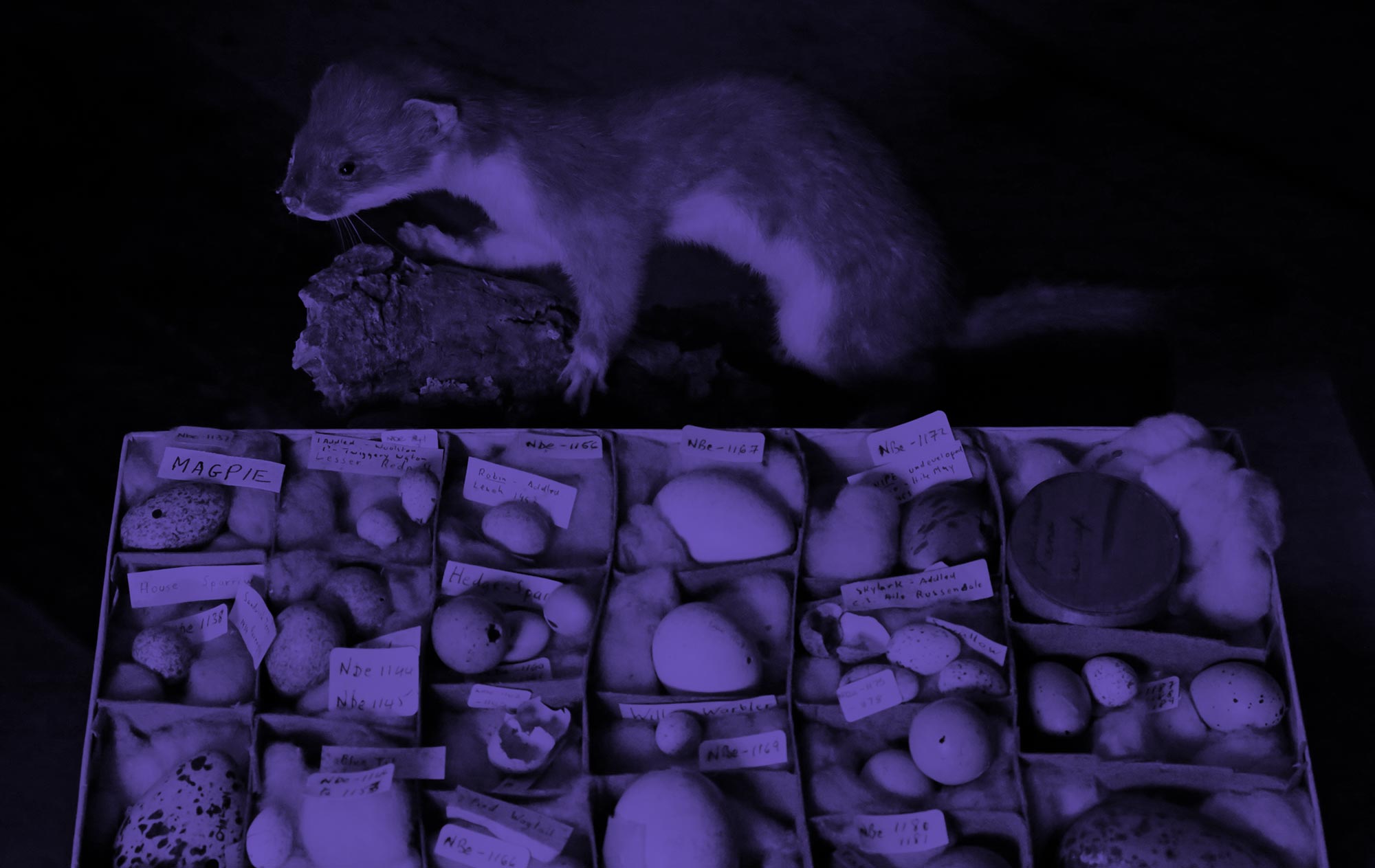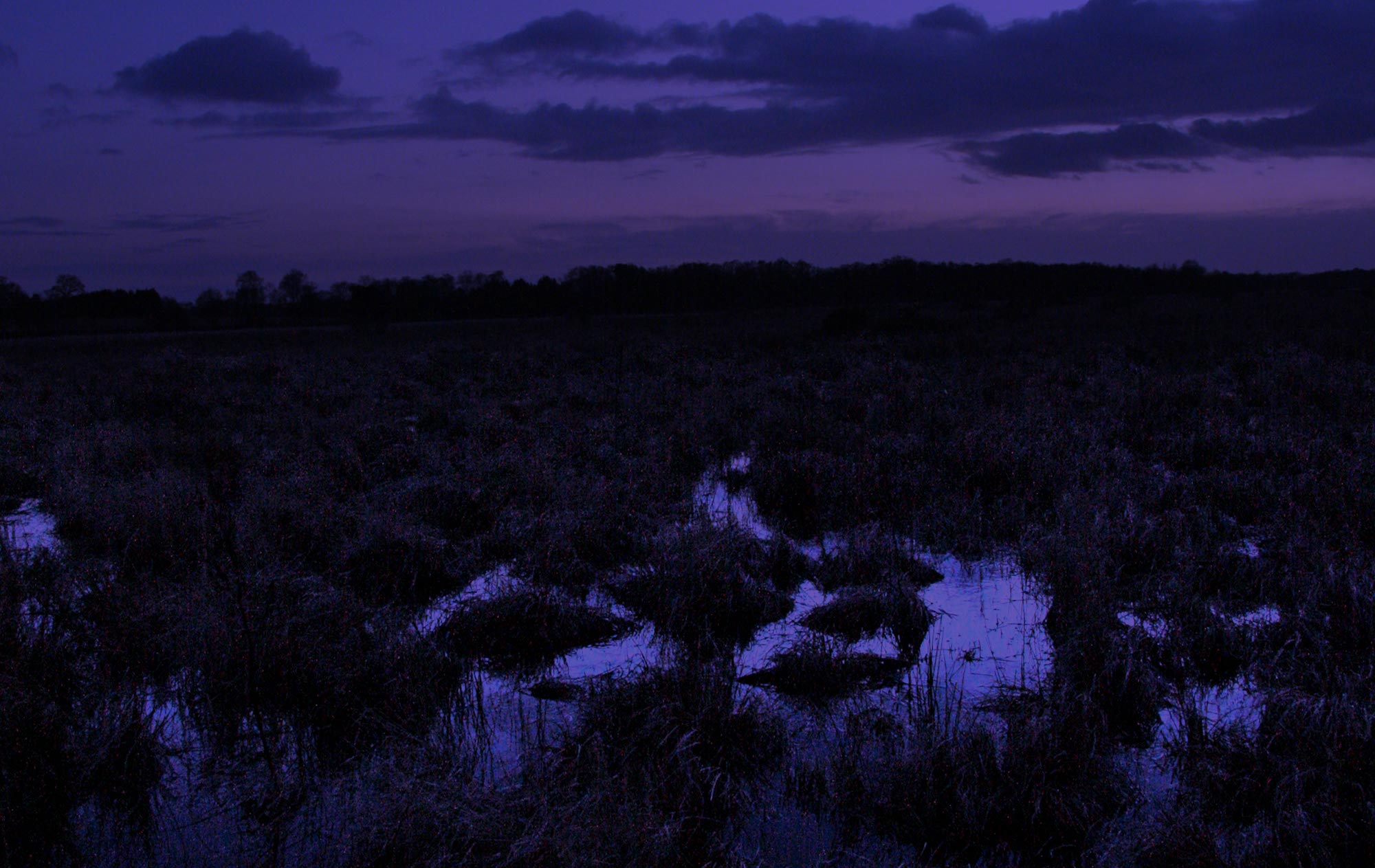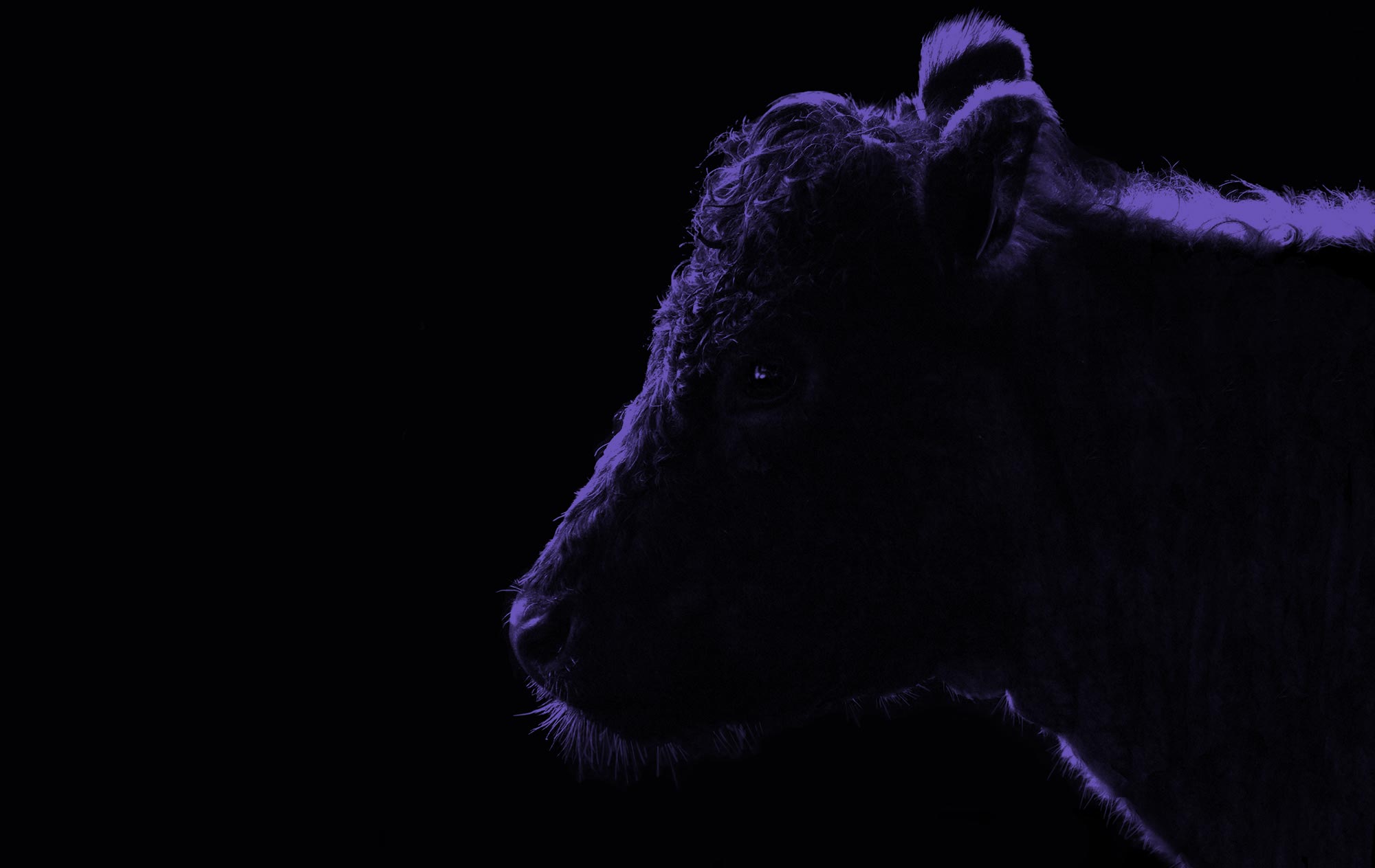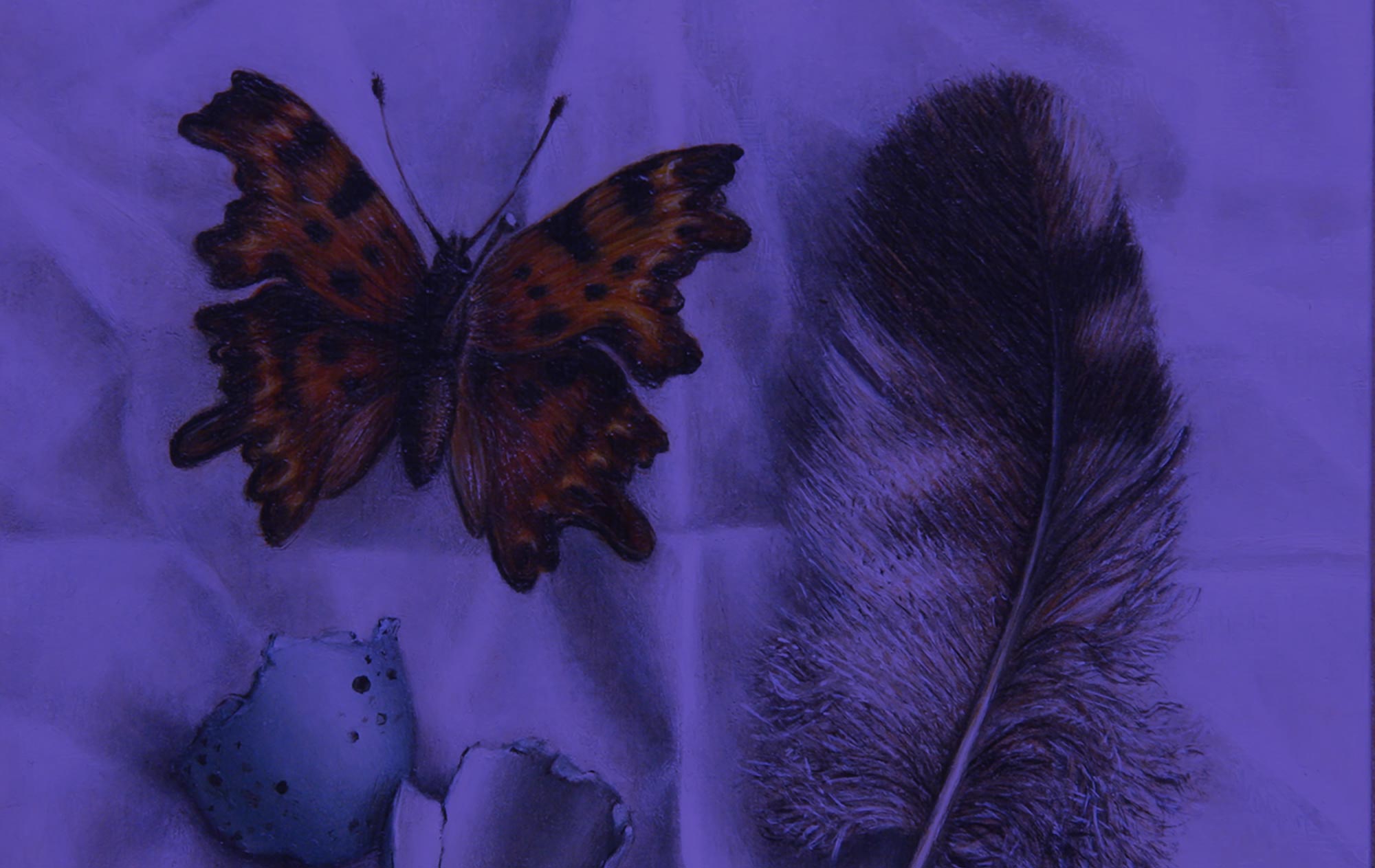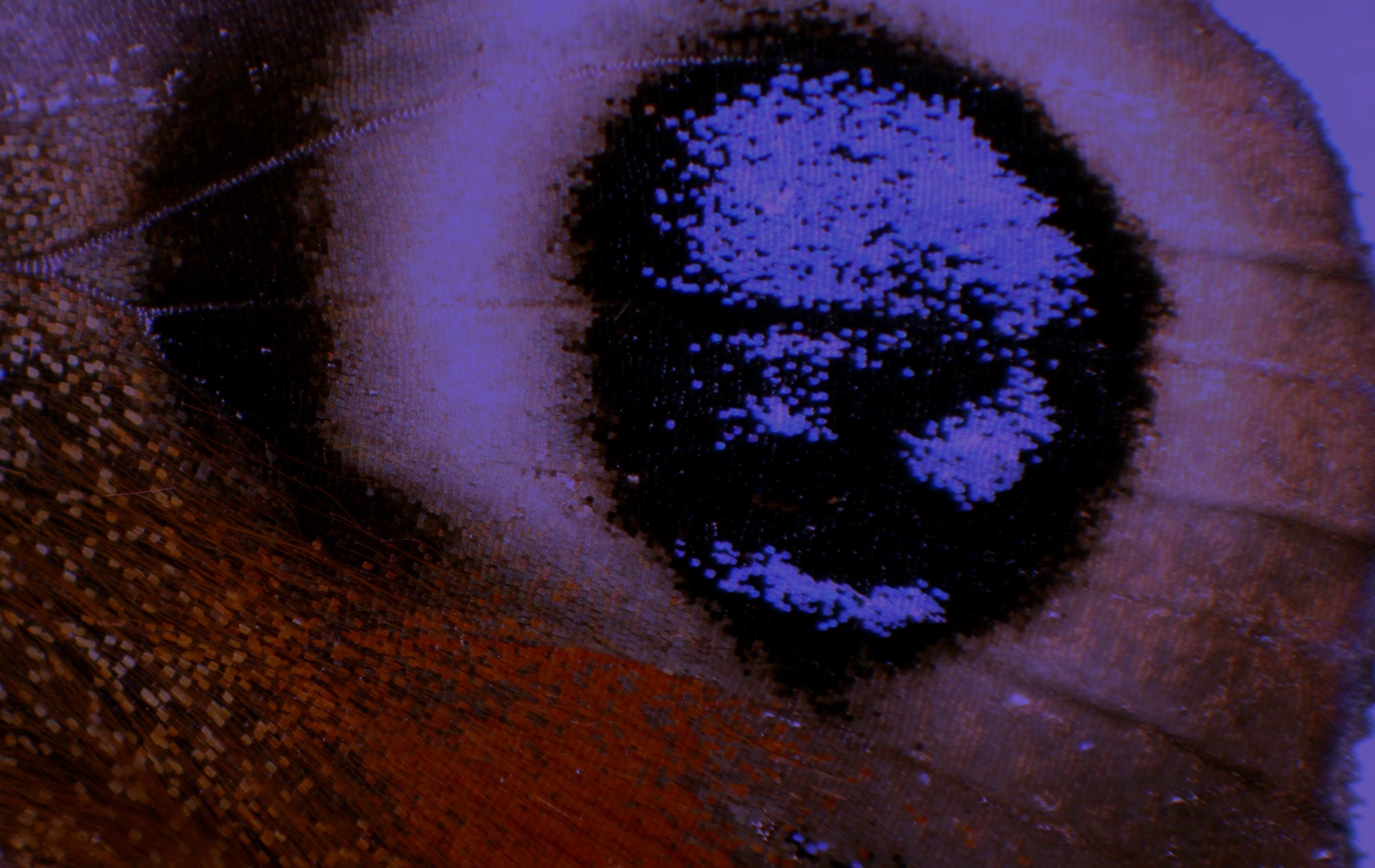Project Description
ARTIST IN RESIDENCE LOW LUCKENS ORGANIC FARM, CUMBRIA
This is a unique and innovative project funded by the Arts Council together with Tullie House Museum, Carlisle, Carlisle City Council and Cumbria County Council and will last for a year culminating in an exhibition in November 2006.
This project has allowed Sheila Tilmouth to research printmaking processes that remove toxic chemicals from the studio environment as well as to develop her artistic practise. She has produced a print for each month of the residency.
The images are a visual response to the farming year and will be exhibited with supporting source material in a barn on the farm. It will subsequently tour to other organic farms and exhibition spaces. The subject matter covers a diverse range of concerns in agriculture such as soil fertility and degradation, livestock management and welfare, biological processes within the food chain and vegetable production in a northern climate.
Sheila Tilmouth has been a practising artist for over 30 years exhibiting extensively throughout the UK. As a still life painter she became increasingly interested in the fruits and vegetables she was using as subject matter leading to a specific interest in organic food production. Through a dialogue with the Soil Association she made contact with Mike Downham at Low Luckens farm and they negotiated terms for a residency that engaged with people who buy their meat and vegetables from the farm.
November: Leaves
This image is of hazel leaves taken in the full blaze of autumn colours as the surface vegetation dies back on the farming landscape. Enlarged to the point of abstraction, the defining shape and form of the subject disintegrates leaving a pattern of pure colours not usually discernable. From this magnification, it is possible to see how light and dark tones and warm and cool colours build to create an image.
( Click Image To Enlarge )
December: Clover
Legumes play a crucial role in the soil fertility of organic farms helping to provide rich pasture for the livestock. This illustrates how soil ecology impacts on nutrient cycling and the food chain. The problems of unifying above- and below-ground levels, displaying different elements and moving from micro to macro in scale were overcome by employing an aboriginal style of art which characteristically shows how all things are connected.
( Click Image To Enlarge )
January: Earthworks
As the seasons move into mid-winter, more of the landforms become apparent, revealing the underlying structure of red sandstone. This is especially so where movement of water in streams and rivers that edged the farm break down associated banking. Burnt sienna, hand-wiped over a textured collograph plate, describes the variety of surfaces and forms found by the riverbank.
( Click Image To Enlarge )
February: Imprints
The waterlogged soil is churned to mud by movements of animals and people over the farm. The image shows the impressions left behind by their footprints, contrasting with the impact of machinery tracks. It shows the vulnerability of the land at this time of year to degradation.
( Click Image To Enlarge )
March: Soil print
This image explores the potential of soil as an artist’s medium researching colour variation, texture and mark-making qualities. Natural binders were tested for adhesive and colour-modifying properties. Vegetables were used as crude printing implements.
( Click Image To Enlarge )
April: Cow portrait
This image addresses the ethics of meat production and the management of livestock. The portrait shows the dignity of the cow and was taken from observations made in the cowshed with the animals defined in low light. It was drawn with the pigment ground from burnt bones and charcoal. The juxtaposition with images from the abattoir is a reminder of the responsibility we take for the welfare of animals in our care and the food we derive from them.
( Click Image To Enlarge )
May: Photosynthesis
As the farm shifts into life with the changing seasons there is a wealth of fresh growth and wildlife activity in the landscape. Livestock is put out into the fields and vegetable production is underway in the polytunnels. As days lengthen and the light intensifies, its importance in driving the food chain through photosynthesis becomes apparent. The energy light provides facilitates the action of chlorophyll on water and carbon dioxide to chemically fix the energy used for plant growth, and ultimately passed to ourselves.
( Click Image To Enlarge )
June: Pig
Here we see a sow rooting in a field showing the diversity of plant growth within her environment. In this setting, pigs display natural social and behaviour patterns such as digging, wallowing, scratching or resting together. Supporting images from the butchery describes the process from carcass to pork chops, and illustrates the production of healthy food for us to enjoy.
( Click Image To Enlarge )
July: Grasses
A hand-wiped collograph showing the rich biodiversity within the farms pasture. Grasses from the meadows were used for the plate. Supporting images illustrate the fields ready for haymaking and silage production, and remind us that this crop provides nutrition for the livestock throughout the winter months.
( Click Image To Enlarge )
August: Harvest
This is a digitally-manipulated image created by photographing the fresh vegetables in isolation immediately after they were cropped, and compositing them together. It shows from flower to mature produce, and illustrates the success of growing in a northern climate when protection and careful selection of variety is employed. The labour-intensive nature of this sort of food production is illustrated in the support material.
( Click Image To Enlarge )
September: Skies
The changing drama of the skies reflects seasonal cycles, weather, day and night. It provides the atmosphere and mood of the day with sunshine or rain clouds; the evocative warm light of autumn; the soft mist of dawn. It seems to hold the air we breathe, provides the water we drink, illuminates the landscape, drenches us with showers… It is an ever changing essential of our environment.
( Click Image To Enlarge )
October: Fungi
Decay and decomposition is an essential part of the farming process, clearing and recycling the organic litter and waste from plants and animals. The woodland ecosystem that this linocut illustrates shows the complexity of this process and the diverse characters within the chain. Working down through the levels of life fungi and other micro-organisms play a major role in reprocessing nutrients making them available for higher life-forms.
( Click Image To Enlarge )
